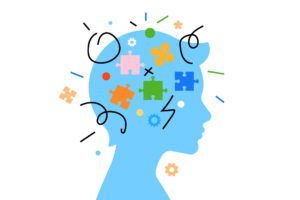
Alien Hand Syndrome – When Your Body Doesn’t Listen
When we take a sip of water or open a door, we do these things without really thinking. We also take for granted that we can do them at all (especially without anything getting in our way).
But what if simple acts we do with our hands are taken away from us? What do you think it would be like to live with an appendage that seems to have a mind of its own? Today we’re going to look at “Alien Hand Syndrome” and the fascinating facts around it.
Alien Hand Syndrome – The “Discovery“
The first documented case appeared in 1908. German neuropsychiatrist, Kurt Goldstein published a medical case report describing a woman who had partially recovered from a stroke that had affected the left side of her body.
The patient not only described her left hand as feeling “strange” in relation to her movements, but it also seemed to move as if it had a mind of its own or was being controlled by another person. She would grab objects and not be able to let go. It would also make spontaneous movements like touching her face.
Since then, doctors have searched for more cases to study and try to dig down to the root cause of this rare neurological condition with cognitive tests.
What Brings It On?
While there have been plenty of breakthroughs over the years, medical professionals still haven’t been able to pinpoint the exact thing that causes this syndrome. Very often, it’s a stroke that’s responsible. But it can be other things as well.
We won’t get into too much medical jargon, but as long as there is something that can damage key parts of the brain (e.g. the corpus callosum or anterior cingulate cortex, etc.), there is a small chance for this condition to appear. The evidence often comes when doctors find lesions on the affected area. There are also other culprits such as…
- Surgeries to treat epilepsy
- Brain tumors
- Neurodegenerative diseases
- Brain aneurysms
- Other brain traumas
Interesting Alien Hand Syndrome Facts
- While it’s usually the left (non-dominant) hand that’s affected, there have been cases of either hand or both hands taking on a “mind of their own.” And, in some exceptionally rare cases, a patient’s leg has also been affected.
- All patients have reported the movements as feeling separate from their own bodies and very unintentional.
- While children can be affected, most cases appear in adults.
- In extremely rare cases patients have reported their hand trying to hurt them. One being choked as she was trying to sleep.
- Patients often say their hand will do the opposite of what they want. For example, one person tried to light a cigarette and their alien hand snuffed it out and threw it away. Another said it would unbutton his shirt after he had just done it up. One woman said she could never keep her bra on because her other hand would always unclasp it.
- While the syndrome is mostly safe, it’s the embarrassment and misunderstandings that come with it that patients have the most difficulty dealing with. For example, if their hand steals something, knocks something over, or randomly shoots up into the air.

Treatment of Alien Hand Syndrome
There is currently no treatment other than management. Some doctors have seen their patient’s symptoms lessen as their brain heals, and in some cases, disappear. More often than not, it’s about learning ways of coping with daily life while having an appendage that does whatever it wants. This has been done either through therapy or through a patient’s ingenuity.
Some examples include…
- Wearing an oven mitt to dampen tactile sensations (sometimes called “muffling).
- Holding a stress ball or other object. For example, one man noticed his hand always wanted to grab things, so he started holding a cane. He didn’t need one to walk, and he wouldn’t even know he was holding it most of the time, but it would solve the problem in a way he could be around people again.
- Wearing medical braces or even handcuffs at night to prevent any movement altogether.
- Creating a “task” for the hand to do and incorporating it during flare-ups.
- The use of Botox or Benzodiazepines under a doctor’s supervision.
- Using “Mirror” or Visuospatial therapy techniques.
The Doctor Strangelove Connection
While this syndrome has appeared in television and in movies (such as House and Idle Hands), the most famous one is from Stanley Kubrick’s 1964 film Dr. Strangelove. The main character has alien hand syndrome and cannot stop doing inappropriate actions, mainly the Nazi salute.
This was used as a comedic relief tactic. The movie became a cult classic, and the syndrome quickly gained another manicure – the Dr. Strangelove syndrome. Some suggestions for this term to become the official name have been squashed, but the title still floats around.
End Thoughts
While the movie might have its funny moments (and from the outside, it’s a fascinating brain disorder), the reality of AHS is not funny at all. It’s, at minimum, inconvenient and more often than not very hard for people to function with.
But, as mentioned before, there are many ways to cope with it. And medicine/therapy has come a long way since 1908. If you or someone you know has this condition, living a fairly normal life is very possible with a variety of treatments.













